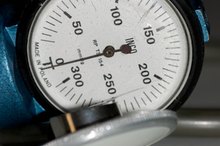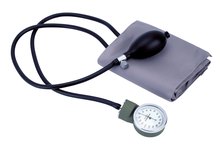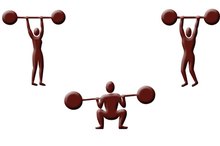More Articles
What Is the Ideal Blood Pressure for a 48-Year-Old Male?
Blood pressure naturally increases with age. For a man in his forties to fifties, the ideal blood pressure depends on his health condition and the activities he was involved in prior to having a blood pressure reading. In general, the average man's blood pressure is the lowest when he wakes up and the highest when he engages in physical activity.
Optimal Blood Preasure
As a rule of thumb, an adult's resting blood pressure should be less than 120 over 80. If a 48-year-old man is performing exercise that increases the heart rate, it is natural for the systolic pressure, the top number, to increase as his heart works harder. At the same time, the diastolic pressure, which is recorded as the bottom number, should stay about the same. While it's optimal to have normal blood pressure, conditions such as heart disease, cancer and type II diabetes can have effects that include lowering or raising blood pressure.
- As a rule of thumb, an adult's resting blood pressure should be less than 120 over 80.
- If a 48-year-old man is performing exercise that increases the heart rate, it is natural for the systolic pressure, the top number, to increase as his heart works harder.
Blood Pressure Risks
What Is the Formula for Calculating Blood Pressure?
Learn More
A 48-year-old man may notice signs and symptoms of high blood pressure. If you experience dizziness, headaches, blurred vision, prolonged nosebleeds or any prolonged blood pressure readings greater than 140 over 90, seek evaluation by a health professional. Your doctor can determine whether you're at risk for high blood pressure and develop an appropriate plan for prevention or treatment.
Related Articles
References
- NCBI: Association of Visit-to-Visit Variability in Blood Pressure With Cognitive Function in Old Age
- National Institutes of Health: Reference Card From the Seventh Report of the Joint National Committee on Pr evention, Detection, Evaluation, and Treatment of High Blood Pressure (JNC 7)
- Measuring Blood Pressure. Centers for Disease Control and Prevention. 2019.
- Wright JT, Williamson JD, Whelton PK, et al. A Randomized Trial of Intensive versus Standard Blood-Pressure Control. N Engl J Med. 2015;373(22):2103-16. doi:10.1056/NEJMoa1511939
- Low Blood Pressure. National Institutes of Health. US Department of Health & Human Services.
- Low Blood Pressure - When Blood Pressure Is Too Low. American Heart Association. 2016.
- Dyckman DJ, Sauder CL, Ray CA. Effects of short-term and prolonged bed rest on the vestibulosympathetic reflex. Am J Physiol Heart Circ Physiol. 2012;302(1):H368-74. doi:10.1152/ajpheart.00193.2011
- Procter LD. Low Blood Pressure. Merck Manual Consumer Version. 2018.
- Vantyghem MC, Douillard C, Balavoine AS. [Hypotension from endocrine origin]. Presse Med. 2012;41(11):1137-50. doi:10.1016/j.lpm.2012.03.023
- Van der wardt V, Harrison JK, Welsh T, Conroy S, Gladman J. Withdrawal of antihypertensive medication: a systematic review. J Hypertens. 2017;35(9):1742-1749. doi:10.1097/HJH.0000000000001405
Resources
Writer Bio
Dr. David Brown is an assistant professor of public health at Jackson State University. He holds a doctorate in health education and a Master of Arts in computers and education from Teachers College, Columbia University. Brown is also a Master Certified Health Education Specialist.







